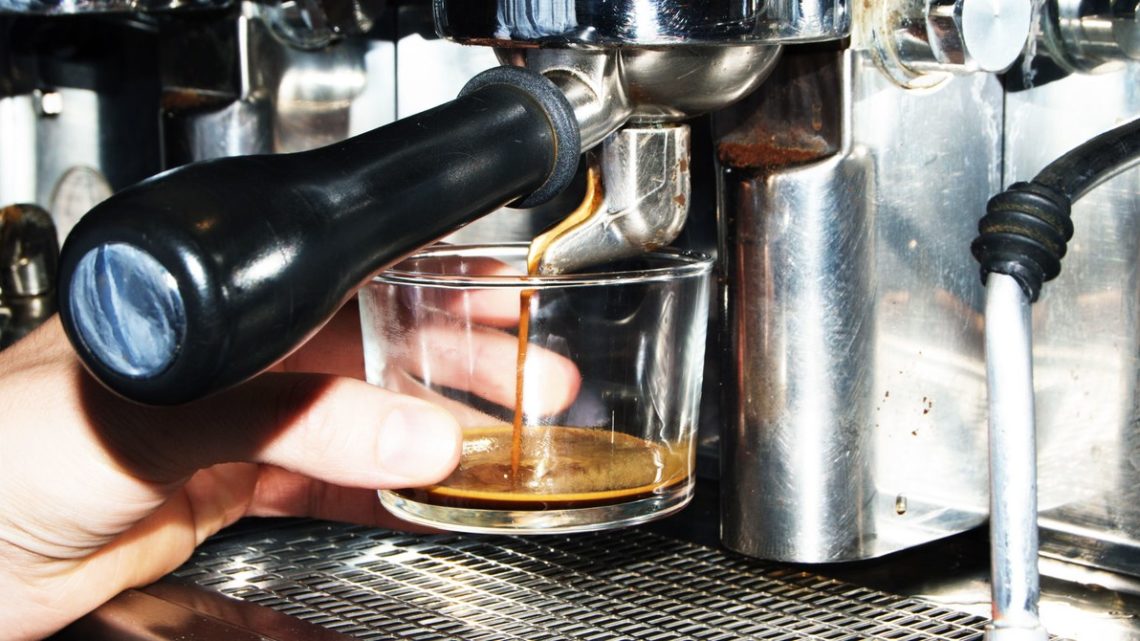
The Science Behind Crafting a Perfect Espresso
January 28, 2020Forgive baristas. You’d be a little emo too if the irreducible unit of your job involved juggling variables including not only the choice of coffee bean and how long it was roasted, but also water pressure, water temperature, total coffee mass, size of individual coffee grains (ranging from 100 to 200 μm—that’s grind setting), and the degree to which those grains are packed together, all working to optimally extract the more than 2,000 different molecules that contribute to taste and smell. Now imagine that even if you follow the boss’s recipe, which usually only specifies some of those things, you still don’t always get 40 milliliters of consistent espresso. It’s a process that 40 pages of partial differential equations can barely wrap their squiggly little symbolic arms around.
No wonder the barista never gets your name right.
In fact, the one thing that coffee specialists agree on is that it’s all very complicated. But now one of them—a computational chemist with a sideline in championship-level espresso-pulling named Chris Hendon—is offering a solution to this specific reproducibility crisis. After six years of work, Hendon says he has a kind of formula for dealing with all those variables to ensure a heretofore unobtainable same-same espresso every time. To be clear, these are the kind of procedural, methodological matters that coffee adherents fight duels over. If all this research seems like a tempest in a teacup (or a dustup in a demitasse?) well, coffee is a high-stakes game.
Hendon got interested in coffee as a PhD student in England, but his fascination extended beyond its function as a solution of good ol’ C8H10N4O2. (That’s caffeine.) Hendon wanted to know about all the other stuff in there too, and his friendship with a local coffee pro turned into stints on the UK and US Barista Championship teams, the World Cup of coffee. “You usually see that the score sheets vary between the judges, and it’s not the judges’ palettes varying. It’s that you pulled four shots of espresso and they don’t taste the same,” Hendon says. “I’ve tasted these espressos. These things are crazy. They’re so good, and you’re not able to make four reproducible ones during competition? That’s where it started.”
Tweaking the kind of variables that shot-pullers generally use to try to pull a perfect cup—grind and tamping down, and sometimes water temperature and pressure—didn’t seem to fix the problem. So Hendon started messing with more inscrutable variables in the lab, like the mineral content of the water or the age of the beans. “We wanted to be able to predict espresso extractions,” Hendon says. A cup of coffee is mostly water, mixed with dissolved solids (around 1 percent in pour-over and anywhere from 7 percent to 12 percent in espresso). So “extraction yield” uses the refractive index of the coffee, essentially the amount of light that can pass through it, to infer how much coffee’s in the coffee; it’s roughly the equivalent of “brix” in wine. “As the density of the coffee increases, or you dissolve more stuff, you see a proportional increase in refractive index,” Hendon says. “It doesn’t tell you any qualitative information. It could be the worst-tasting cup of coffee you ever had and it could have the same extraction yield as the best.” But it’s something you can count.
Grind the beans into smaller pieces—more “fines” relative to the larger “boulder” fragments—and you get a higher extraction yield for a given amount of water over a given amount of time. That makes sense. A finer grind exposes more coffee surface area to water. And Hendon’s new model predicts that increase in extraction yield. But it turns out that it’s only true to a point. At a certain fineness, the particles pack too closely together in the espresso machine’s basket, the water can’t permeate as well, and extraction yield peaks.
But since that packing isn’t homogeneous, the actual flavor will vary. Coffee pros will typically say that underextraction (not enough coffee surface area? Grind too coarse? Packed too light? Not enough water?) yields sour flavors, and overextraction (the opposite of those other things?) yields bitterness. According to the Specialty Coffee Association—which didn’t return my requests for comment—people like extractions between 17 percent and 23 percent, and a combination of acidic sour flavors and basic bitter ones, not too much or too little of either.
Anyway, whew, sorry, got a little obsessive there. It happens. The point is, Hendon says, if you can find a grind setting that gets you to 23 percent extraction yield, then you can mess with the other variables safely. That’s the key. Get to that number, and then taste. “You have to do some tricks to navigate the espresso landscape,” he says. “If I just use less coffee, my extraction yields for the same amount of coffee go up.” (Because that’s like having more solvent, water, relative to coffee.) The same thing happens if you use less coffee but grind coarser—you’ll get more dissolved solids, but also more overextracted, bitter flavor.
“The other option is to go to the maximum extraction yield and use a little less water,” Hendon says. The runtime of the shot gets shorter, and the size of the espresso goes down a bit, but it also doesn’t overextract negative flavors. It’s all about the changing ratios of water, the solvent, and coffee, the thing from which that water is extracting flavor compounds.
So Hendon suggests starting with a very coarse grind of roughly the usual amount of coffee a barista would go with, 20 grams. Since looser, coarser grinds yield faster runtimes, that’ll yield a 10-second pull and a cup of coffee that’s acidic and thin. Then, he says, it’s time to iterate. Progressively grind finer and finer until you get to a maximum extraction—after that, it’ll start to taste thinner again. “If it is overextracted at this point, you need to use less water,” Hendon says. “If it is underextracted at this point, you use less coffee.” Find your happy place, and you can reach it again and again, without being flummoxed by trying to achieve a specific runtime. A perfect cup, every time (assuming, I should point out, you use the same coffee beans and roast).
This has implications beyond consistency in the espresso shot. Because one possible result is reducing the amount of coffee in an acceptable espresso, Hendon’s method might allow specialty cafes to use up to 25 percent less coffee. And at a cafe where the owners actually tried this method, shot times went down to 14 seconds as opposed to the often mandated-by-management 25. Time is money. So is coffee; based on a consumption of 124 million espresso-based beverages a day in the US, Hendon calculates a savings to the industry of as much as $1.1 billion a year in coffee budgets alone.
This is coffee, and everyone agrees that coffee is complicated. Not everyone agrees exactly how, though. Nick Cho, co-CEO and head barista of Wrecking Ball Coffee and something of a coffee celebrity in the San Francisco Bay Area, didn’t buy Hendon’s results at all. “The idea that you can increase yield in any way, and that attributing a value to that, that this could be good for business, that’s Nestle and Folgers,” he says. “That’s not where we live. This is like saying if they did the grapes a different way you could get another 10 ounces of wine out of an expensive Bordeaux. The expensive Bordeaux people don’t give a shit.”
It’s possible national would-be specialty coffee chains might, though. If Starbucks could reduce its coffee purchase, that might have global economic impact. Cho didn’t even think Hendon went far enough with his variables. “They assumed there was microporosity of the coffee particles, but when they looked, there wasn’t,” he says. “That’s true as long as it’s not dark-roasted coffee. Dark-roasted coffee by definition is roasted until there’s microporosity.”
Cho also had some issues with the coffee sourcing and the type of grinder Hendon’s team used. I won’t burden you. “We’re in the business of creating these cafe and coffee experiences. The flavor and the aroma of the coffee, the flavor notes, these are the things we’re concerned about. Getting a high yield is not,” he adds.
Hendon says he doesn’t want to get in the way of any of that. He wants baristas to be as artful and emo as they need to be: “I want them to arrive at a flavor and be able to serve me with confidence, that the flavor profile they enjoy is in that cup. Espresso is quite complicated, and we’ve presented a way for baristas, home users, anybody interested in using an espresso machine to navigate this space.” If it makes baristas happier, it’s worth it.
If it makes the coffee drinkers happy, too? Even better.
Read more: http://www.wired.com/
